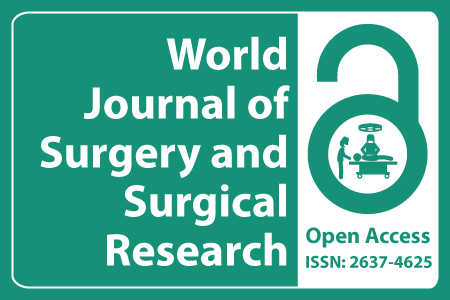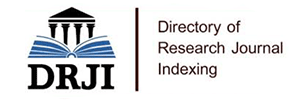
Journal Basic Info
- Impact Factor: 1.989**
- H-Index: 6
- ISSN: 2637-4625
- DOI: 10.25107/2637-4625
Major Scope
- Trauma Surgery
- General Surgery
- Cancer Surgery
- Orthopaedic Surgery
- Reconstructive Surgery
- Pediatric Surgery
- Robotic Surgery
- Colorectal Surgery
Abstract
Citation: World J Surg Surg Res. 2023;6(1):1495.DOI: 10.25107/2637-4625.1495
Analysis of Implant Survival Placed in Resorbed Alveolar Ridges Regenerated with Iliac Crest Autogenous Grafts: A 15-Year Follow-Up
Daniele V, Fabio C and Fabrizio C
Private Practitioner, Monza, Milan, Italy
Department of Medicine and Surgery, University of Milano-Bicocca, Italy
*Correspondance to: Daniele Viscardi
PDF Full Text Research Article | Open Access
Abstract:
Background: Over the years, techniques have been developed that allow bone to be placed where it is deficient, in order to regenerate the area of interest, and one of these involves the insertion of a graft. The iliac crest is one of the most frequently used donor sites in the context of extra-oral autologous blood harvesting, as it allows for the harvesting of a large quantity of both cortical and corticomedullary bone as well as spongiosa alone.
Methods: The retrospective study aims to evaluate the implant survival 15 years after a definitive prosthetic rehabilitation on implants, inserted as a result of an autologous bone graft taken from the iliac crest. The 72 implants examined were positioned in two surgical stages in the two upper and lower maxillary arches, some with the classic implant surgical technique and others with a guided implant surgical technique. Controls were performed with radiological examination, in particular orthopantomography, and clinical evaluation.
Result: Of the 72 implants placed, none showed implant failure 1 year after placement. At 5 years the success rate is 98.6%, at 10 years it is 94.4% and at 15 years it is 86.1%. The results show a total of 10 implants were lost: 1 at 5 years, 3 at 10 years and 6 at 15 years.
Conclusion: Despite the difficulties related to post-operative morbidity and the need for a second operation, the iliac crest graft allows the rehabilitation of large edentulous areas, with a reduced percentage of resorption and ensures faster neoangiogenesis with faster engraftment.
Keywords:
Oral surgery; Autologous bone; Bone graft; Implantology; Iliac crest
Cite the Article:
Daniele V, Fabio C, Fabrizio C. Analysis of Implant Survival Placed in Resorbed Alveolar Ridges Regenerated with Iliac Crest Autogenous Grafts: A 15-Year Follow-Up. World J Surg Surgical Res. 2023; 6: 1495..













